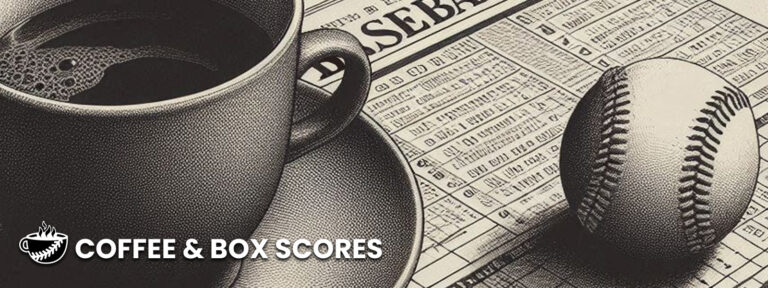The very first Opening Day home run in the modern era came from an unlikely source: the bat of pitcher Jack Powell. On April 19, 1901, in front of the home crowd in St. Louis, the hurler helped his cause in what was ultimately an 8-7 loss to Chicago (on the mound, Powell went the distance, surrendering 18 hits in addition to the eight runs – quite a firework-y start to the season). 13 years later, Philadelphia’s Sherry Magee became the first to have a pair of Opening Day round-trippers, part of a six-RBI day for the Phillies’ left fielder. The record-setting effort was more than enough for Pete Alexander, who held the Giants down in a 10-1, complete game win. It was the first of eight Opening Day victories for the Hall of Fame right-hander, still tied for the second most ever (Walter Johnson had nine and Jack Morris also recorded eight).
Baseball’s Opening Day is a holiday – an event that soothingly and even seductively beckons during the days between daylight savings. “I’ll be there,” it promises: a singular day of renewal, reacquaintance and perhaps as importantly, record keeping.
We can so easily pinpoint it and dig from that exact ‘X’ on the map – we have Opening Day box scores from every American and National League contest since 1901, all these means to chart and tally and add blocks to what came before. It’s an essential part of baseball’s story, the numbers stemming from the day when every team begins with the exact same record and every pitcher the same ERA and every batter an identical slash line. Jackie Robinson’s seismic start at first base for Brooklyn on April 15, 1947 … Steve Carlton and Tom Seaver facing each other five times to inaugurate a season … Ichiro Suzuki and Albert Pujols making their Major League debuts on the same day to open the 2001 campaign … Babe Ruth homering to christen Yankee Stadium in a win against the Red Sox in 1923 and Ryan Zimmerman walking it off with a solo shot to welcome Nationals Park to reality in 2008 … Lon Warneke losing his bid for an Opening Day no-hitter with one out in the ninth in 1934, Bob Feller completing that particular deed in 1940: the moments and the lore attached to the historic are accompanied by facts and figures that we can plunge into and compile into a map of Opening Day.
In anticipation of the start of the 2025 campaign, we begin with kapows and socks and whams and booms, what George Scott popularized as “taters.” The early “firsts” from Powell and Magee are just a small portion of the resonance that comes when pairing home runs and Opening Day, just two of several surveys that can be explored.
One of the more famed Opening Day dingers arrived on April 8, 1975, when Indians DH Frank Robinson – placed in the starting lineup by manager Frank Robinson – wasted no time forcing an edit to the record books. In the first inning of that contest against the Yankees, the righty- swinging Robinson sent a Doc Medich pitch over the left field wall for his eighth career Opening Day longball to become the most prolific Game 1 homerer in history. Since his swat to break out of tie with Babe Ruth, Eddie Mathews and Willie Mays, Robinson has welcomed two others to the top of the mountain, fellow Hall of Famer and 500-homer club member Ken Griffey, Jr. and an outsider to both associations, Adam Dunn.
Dunn slogged through his first three Opening Days, not only failing to go yard but also starting his seasons with a trio of oh-fers. His individual lines then dramatically pivoted, as his next five Opening Days contained all sorts of explosiveness – six total home runs and 15 RBI. The declarations included a pair of multi-homer games, giving him special status as one of just five players to reach that elevation (Mathews, Joe Torre, Raúl Mondesi and Juan González also had two multi-homer Opening Days on their respective ledgers; since Dunn joined the collection, Xavier Nady and Albert Pujols thwacked their way into the room). In each of these cases, the multi-homer game landed with two (the list of the barrier-breaking “three homers on Opening Day” is offered later on).
Torre deserves special recognition here, as he one-upped his multiple multi-homer Opening Day colleagues by assembling his in back-to-back years. To add to the allure, Torre is also the only catcher to have multiple multi-homer Opening Days.
Torre hadn’t yet celebrated his 25th birthday when he produced his first two-homer effort, on April 12, 1965. In that 4-2 win for the Braves, Mathews also went yard for his record-tying (in the moment, matching just Ruth) seventh Opening day longball. By then, he was in his early 30s, more than a decade removed from when he made his own little bit of history. On April 13, 1954, in a blast of a ballgame (Mathews’ Braves and their opponents, the Reds combined for 15(!) extra-base hits*), Mathews was 22 years and 182 days old, at the time the youngest player to produce a two-homer day in his team’s initial game of the year.
(*I know this piece is supposed to focus on round-trippers, but this contest deserves a moment in the sun. Cincinnati’s Jim Greengrass tied a record (set in 1901) with four doubles and Milwaukee’s Andy Pafko contributed three of his own. Before this specific contest, only seven others had ever produced as many as three two-base hits in an Opening Day. Crazily enough, two of those previous seven efforts also came in the same game. On April 14, 1936, Leo Durocher and Billy Herman each tallied three in a 12-7 win for Herman’s Cubs over Durocher’s Cardinals. Okay, back to home runs).
After Mathews, Don Money – in 1969 – became the youngest (at 21 years and 305 days old) to go deep twice in an Opening Day. The infielder then held the low mark for more than 40 years, until 20-year-old Bryce Harper provided ALL of the scoring offense on April 1, 2013, when his Nationals club blanked the Marlins, 2-0.
When Harper had that solo (x2) show, he was participating in his very first Opening Day (his Major League debut had come a year earlier, in Washington’s 21st contest of the season). Not a bad way to start and for a while, it looked as if going big fly on Day 1 would be an appreciable part of his budding narrative. After 2013, he went yard in three of his next four Opening Days. He wasn’t even 25 years old yet, and he had five Opening Day home runs; surely, one was allowed to imagine, he’s going to challenge Robinson and Griffey, Jr. and Dunn for the most ever.
Harper’s now 32 and still stuck on five, tied for the most among active players but still disappointing considering he’s failed to go yard in six straight team openers. In extraordinary contrast to that ineffectual stretch, Tyler O’Neill has – in each of his past five Opening Days – rung in the new season with a trot around the bases. The streak is the longest ever, one better than the runs produced by Yogi Berra (1955-1958), Gary Carter (1977-1980) and Todd Hundley (1994-1997) – how and why this record was, before O’Neill, exclusively secured by catchers is beyond me, but there you have it. If somehow O’Neill – now with the Orioles – can collect four bases on a single swing in this year’s opener, he’ll not only extend that record-best streak, he’ll climb into some rare ranks, whether it be for career Opening Day dingers or most Opening Days with a longball. Before I pursue one last note, let’s take some stock in the various leaderboards as they look before anyone plays for real in 2025.
All-Time Leaders – Most Opening Day Home Runs
8: Frank Robinson, Ken Griffey, Jr., Adam Dunn
7: Babe Ruth, Eddie Mathews, Willie Mays
6: Brooks Robinson, Carl Yastrzemski, Richie Hebner, Dave Winfield, Gary Carter, Barry Bonds, Scott Rolen
All-Time Leaders – Most Games With an Opening Day Home Run
8: Frank Robinson
7: Ken Griffey, Jr.
6: Babe Ruth, Willie Mays, Gary Carter, Dave Winfield, Adam Dunn, Scott Rolen
5: Tyler O’Neill is tied with a bunch of others (all non-active) at five
Active Leaders – Most Opening Day Home Runs
5: Bryce Harper, Tyler O’Neill, Giancarlo Stanton
4: Nolan Arenado, Anthony Rizzo, George Springer, Mike Trout
Most Home Runs on Opening Day
3 George Bell in 1988
3 Tuffy Rhodes in 1994
3 Dmitri Young in 2005
3 Matt Davidson in 2018
Youngest Players with a Multi-HR Game on Opening Day
20 years, 167 days: Bryce Harper in 2013
21 years, 305 days: Don Money in 1969
22 years, 147 days: Sammy Sosa in 1991
22 years, 182 days: Eddie Mathews in 1954
22 years, 182 days: Joe Pepitone in 1963
Youngest Players to Homer on Opening Day
19 years, 204 days: Robin Yount in 1975
20 years, 95 days: Tony Conigliaro in 1965
20 years, 139 days: Ken Griffey, Jr. in 1990
20 years, 167 days: Bryce Harper in 2013
20 years, 210 days: Orlando Cepeda in 1958
I wanted to arrange the lists this way as Cepeda is a special case – the informational equivalent to a walk-off homer in extra-innings on Opening Day, something extra to celebrate the occasion. When Cepeda went deep for the Giants in the fifth inning on April 15, 1958 (against the Dodgers, no less), the youngster was also making his Major League debut. He’s the youngest to coronate a debut on Opening Day with a longball, and one of two Hall of Famers to initiate a very special career with such a feat, along with Cleveland’s Earl Averill in 1929. The fact that the Giants were playing their very first game after leaving New York only adds to the allure of this moment.
If you agree that Opening Day is a holiday and if you’ve read this far in the piece, odds are you have your own embraces of memory that tie home runs and season beginners together. Maybe the time Pittsburgh’s Neil Walker broke a 0-0 tie in the 10th with a walk-off four-bagger; maybe when Dwight Evans opened Boston’s magical 1986 season with a tater to lead off the game; perhaps the day Derek Jeter began his Rookie of the Year campaign with a blast to left in Cleveland; and perhaps the time when Will Clark stepped to the plate for his first big league plate appearance, sized up a Nolan Ryan windup from 60 feet, six inches away and then said, “Yep, I’ve got this” with a launch in the Astrodome. There’s a buzz on Opening Day that is like nothing else, and when that extra current is boosted by bat meeting ball to describe a long arc clearing the fence, well, that’s just about as perfect as can be.
*All of the numbers and ranks and identifications of the “youngest” and “first” are reflective of ONLY the AL and NL since 1901.
Thanks to Baseball Reference and its extraordinary research database, Stathead, for help in assembling this piece.

Roger Schlueter
As Sr. Editorial Director for Major League Baseball Productions from 2004-2015, Roger served as a hub for hundreds of hours of films, series, documentaries and features: as researcher, fact-checker, script doctor, and developer of ideas. The years at MLB Production gave him the ideal platform to pursue what galvanized him the most – the idea that so much of what takes place on the field during the MLB regular and postseason (and is forever beautifully condensed into a box score) has connections to what has come before. Unearthing and celebrating these webs allows baseball to thrive, for the present can come alive and also reignite the past.


